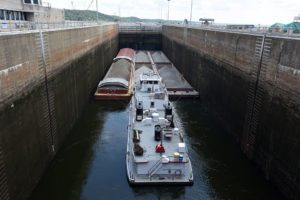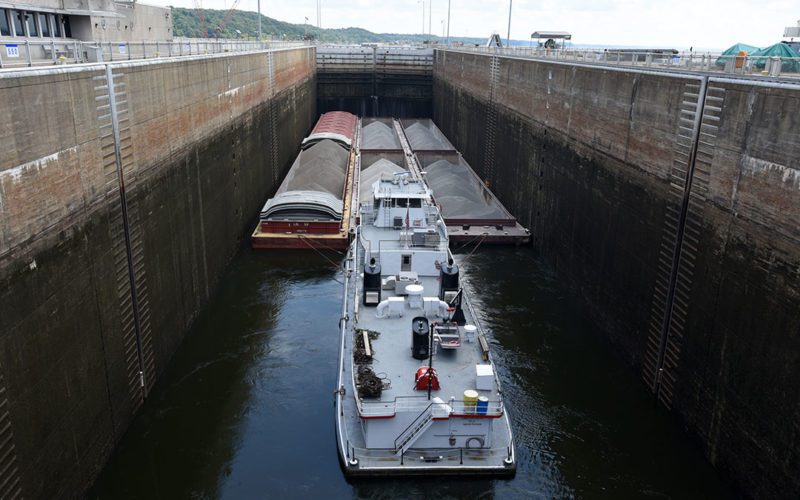
The U.S. Army Corps of Engineers has released its plan to use money from the Infrastructure Investment and Jobs Act to fund critical inland waterway projects.
The plans include $465.49 million for the Kentucky Lock on the Tennessee River; $857.71 million for the Montgomery Lock on the Ohio River; $732 million for Lock and Dam 25 on the Upper Mississippi River; $109.15 million for Three Rivers on the Arkansas River and $52.52 million for the T.J. O’Brien Lock and Dam on the Illinois Waterway.
All the projects are funded to completion with this $2.22 billion allocation, except for the Three Rivers project.
“Today’s release of inland waterways infrastructure funds will not only advance the inland waterways construction portfolio but also create thousands of skilled jobs for America’s building trades, make American farmers more competitive and promote energy security,” Waterways Council Inc. President and CEO Tracy Zea said in a statement.
Deb Calhoun, senior vice president of Waterways Council Inc., spoke with Professional Mariner about the investment.
Calhoun explained the projects were selected based on the Capital Investment Strategy, a list of priority navigation needs across the inland system identified by the Inland Waterways Users Board. Broadly speaking, the network of inland waterways supports roughly 541,000 American jobs.
The projects funded through the bipartisan infrastructure package will increase construction opportunities for people working in the region. Efficiency gains once the locks are upgraded as planned can mean additional jobs for farmers and shippers using the inland waterways, Calhoun said.
“The modernization of our locks, and construction of Lock 25, will mean greater efficiency and reliability for commodity shippers (and) that includes American farmers exporting their crops to foreign markets. A 2019 USDA study noted that rebuilding locks in most need of capital improvements within 10 years could inject $72 billion additional dollars into our nation’s GDP, so this is a win for the overall U.S. economy as well,” Calhoun said.
Lock and Dam 25 on the Upper Mississippi River is part of the Navigation and Ecosystem Sustainability Program with the U.S. Army Corps of Engineers.
The program, created to improve navigation and restore the ecosystem of the river, received construction funding through the Infrastructure Investment and Jobs Act.
In addition to $732 million for work at Lock and Dam 25, $97.1 million was allocated to a fish passage at Lock and Dam 22.
Army Corps officials say that when a new 1,200-foot lock chamber adjacent to the existing 600-foot chamber is complete, it will improve efficiency and reliability.
Lock and Dam 22 is one of five fish passage locations on the Mississippi River authorized by the program and the first to be funded for construction.
The American Waterways Operators in Arlington, Va., has also voiced its support for this new federal spending on inland waterways.
AWO President and CEO Jennifer Carpenter said in a statement that this is a critical and timely investment in American competitiveness and American jobs.
“This historic investment will help to ensure the safety, reliability and efficiency of our nation’s vital waterways infrastructure for years to come,” Carpenter said.
According to an evaluation of economic impacts and the potential effects of infrastructure investment prepared by the University of Kentucky and the University of Tennessee in November 2014, the nation’s inland navigation system moves roughly 550 million annual tons of freight and reduces the need for U.S. railroad capacity by as much as 20 percent.

